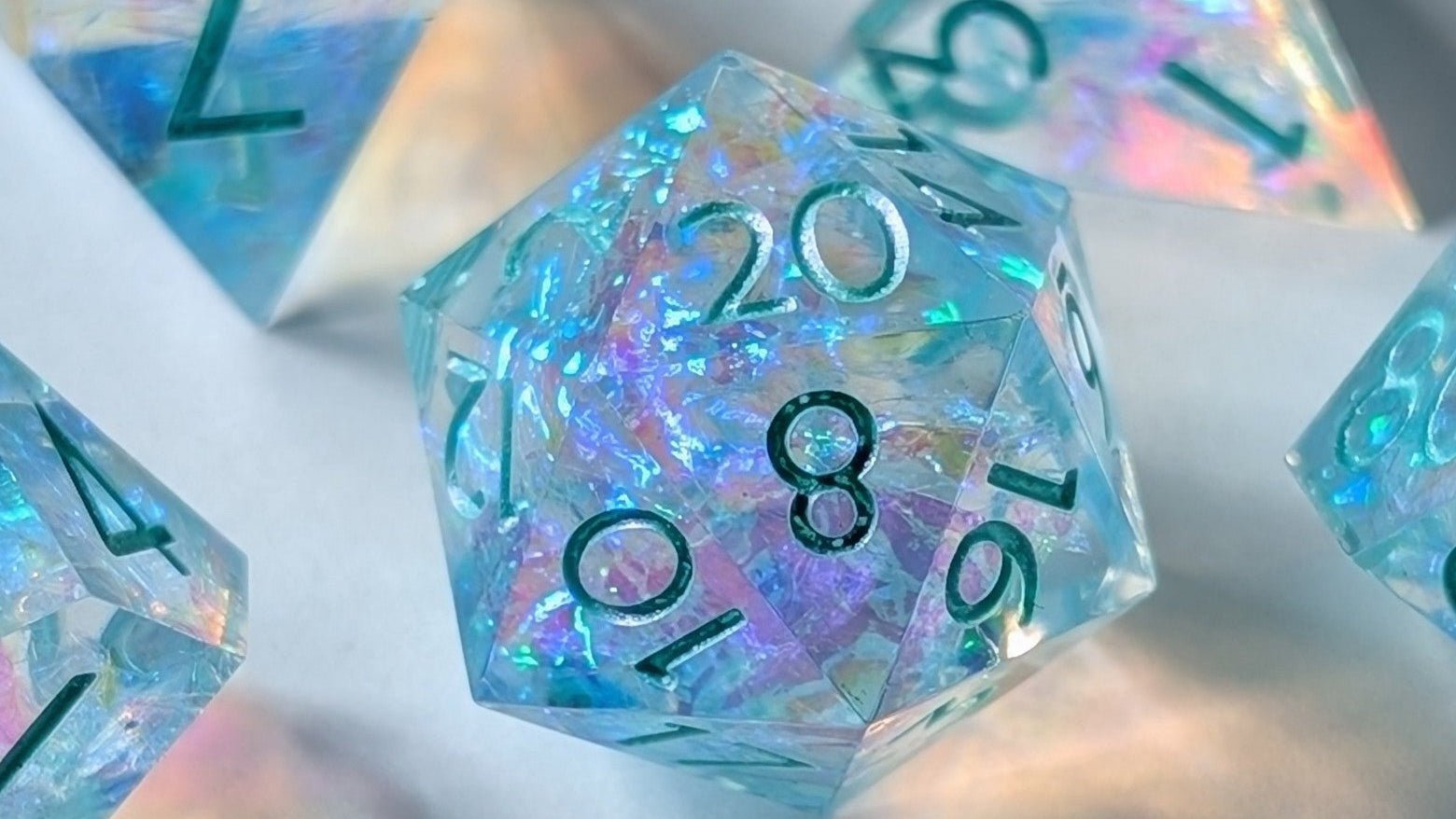
Why Balanced Dice Matter in Dungeons & Dragons (and Every TTRPG)
Why dice balance matters in role playing games
In tabletop games like Dungeons & Dragons, Call of Cthulhu, or Pathfinder, the humble polyhedral die holds immense power. It determines fate, fuels storytelling, and makes the difference between a glorious victory or a total party wipe.
But not all dice are created equal. Let’s talk about dice balance—why it matters, how to check it, and what it means for your gaming dice set.
What Is Dice Balance?
Dice balance refers to how evenly weight is distributed throughout the die. A balanced die gives each face an equal chance of landing face-up when rolled. An unbalanced die, on the other hand, favors certain numbers—skewing outcomes and potentially impacting the fairness and fun of your game.
Types of Polyhedral Dice
- D4
- D6
- D8
- D10
- D12
- D20
Regardless of shape, each die should offer consistent and random results.
How Dice Become Unbalanced
Even small imperfections in a die’s shape, material, or finish can lead to imbalance:
- Mold Lines or Bubbles: Air bubbles and uneven resin fill can shift internal weight.
- Uneven Inclusions: Glitter or foil that isn’t centered can favor one side.
- Inconsistent Pip Engraving: On D6 dice, deeper pips = more missing material = possible imbalance.
- Edge Rounding: Tumbled or worn edges can lead to predictable rolls over time.
- Mismatched Materials: Hollow metal or layered dice often roll inconsistently.
Real-World Impact of Unbalanced Dice
Here’s how unbalanced dice can affect gameplay:
Example: Two players roll D20s. One uses a fair die, the other a flawed die that lands on 20s too often. Over time, that’s more crits, more damage, and an unfair edge.
Even a 2% deviation adds up fast in long campaigns. Fairness matters—especially in games that rely on critical moments and natural rolls.
How to Test Dice Balance at Home
🧂 Saltwater Float Test
- Fill a cup with warm water and add salt until your die floats.
- Gently spin the die and let it settle multiple times.
- If the same number floats to the top often, it may be biased.
📊 Roll Tracking
Roll a D20 at least 100 times. Each number should appear ~5% of the time. If some numbers appear far more often, that die may be unfair.
👁️ Visual Check
Look for warped faces, off-center inclusions, or chipped edges. These visual clues often indicate balance issues.
Do You Need Perfectly Balanced Dice?
For casual games, a small imbalance may go unnoticed. But for:
- Competitive campaigns
- Organized play or tournaments
- High-stakes or story-defining rolls
...a balanced die ensures fairness and fun for everyone at the table.
How To Choose Balanced Dice
✅ Choose:
- Sharp-edged resin dice (less tumbling = more precision)
- CNC-machined metal dice for professional-grade fairness
- Handcrafted dice from trusted makers who quality check for centered inclusions and balanced pours
❌ Avoid:
- Hollow novelty dice
- Cheap factory-made acrylic dice with visible bubbles or warped faces
- Mixed-material dice with unknown center mass
🎯 Final Thoughts: Balance = Fairness + Fun
Your dice are the impartial judges of fate. If they’re secretly biased, it chips away at the tension and drama that make tabletop games so rewarding.
Whether you’re a forever DM or a new player rolling your first crit, your dice should be trustworthy, fair, and fun.



